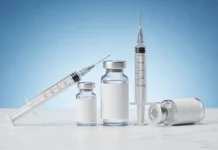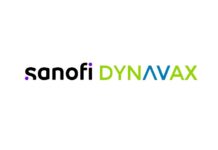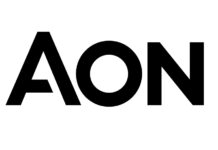Projected data suggests that the global expenditure on medications will reach $1.29 trillion by 2027i. This surge in spending has led to a heightened demand for contract manufacturing organizations (CMOs) to undertake aseptic fill-finish manufacturing agreements, particularly for parenteral products.
Executing the production of pharmaceuticals under tightly controlled environmental conditions serves the dual purpose of shielding patients from contaminants and extending the shelf life of the drugsii. This approach is appealing as it upholds the product’s integrity and effectiveness. In this context, we delve into the reasons behind the escalated need for aseptic fill-finish processes and delve into the intricacies of the procedure.
Reasons for the Surge in Fill-Finish Demand:
According to insights, there are currently over 200 commercially available biologics and more than 10,000 candidates undergoing clinical assessmentiii. Parenteral drugs, like biologics, are designed to be administered via one of these four methods:
- Intravenous
- Intramuscular
- Subcutaneous
- Intrathecal
Given that these drugs are most frequently administered through injections or infusions, aseptic procedures are imperative to prevent microbial contamination and ultimately safeguard patients.
The mounting demand for biologicsiv, such as advanced injectable oncology treatmentsv, has fueled the growth of CMOs with expertise in aseptic processes. Additionally, the global need for COVID-19 vaccinations post the 2020 pandemicvi has further emphasized the requirement for this specialized knowledge.
With aging populations and the accompanying rise in complex chronic ailments, novel therapeutic methods necessitating injections are being developed. Parenteral drugs offer advantages by ensuring better bioavailability of the active substance in each dose. In comparison to other delivery methods like oral tablets, parenterals allow for lower active substance concentrations to achieve the desired therapeutic effect. This translates to reduced risks and severity of side effects for patientsvii. In cases where high concentrations of active substances are needed, parenterals administered via intravenous injections are preferred as they bypass first-pass metabolism by the liver.
Regulatory Oversight:
CMOs and contract development and manufacturing organizations (CDMOs) are subject to region-specific regulatory bodies that issue licenses for manufacturing and releasing drug products under aseptic conditions.
For instance, the Medicines and Healthcare products Regulatory Agency (MHRA) oversees clinical release in the UK, providing guidelines and best practices. In the US, the Food and Drug Administration (FDA) outlines protocols through current good manufacturing practice (cGMP) standards. To manufacture parenterals and other pharmaceuticals, CMOs must adhere to stringent control measures and undergo regular audits to ensure compliance.
Aseptic Fill-Finish Factors:
There are three primary sterile production methods: terminal sterilization, sterilization by filtration, and aseptic processing. Terminal sterilization involves sterilizing the final product within its container or vial. However, due to the sensitivity of modern drug formulations, not all can withstand terminal sterilization’s heat.
Aseptic fill-finish requires a skilled and diligent team with diverse expertise to successfully execute the production of aseptic drug batches. Depending on the modality, formulation, and desired therapeutic effect, the steps for aseptic fill-finish encompass:
Drug substance production and purification
- Thawing and inspection
- Formulation and filtration
- Metered filling
- Lyophilization (if needed)
- Container closure
- Visual inspection
- Labeling and packaging
- Certification and release
Sterile conditions are crucial for filling and require a cleanroom with specialized equipment like isolators and laminar flow hoods. Each equipment piece must be sterilized between uses without compromising the drug product’s integrity.
Throughout the process, rigorous quality control is paramount, overseen by experts who monitor various factors like manual processing, atmospheric conditions, equipment calibration, and excipient testing to prevent contamination. As the drug substance progresses through the process, the acceptable cleanroom bioburden range decreases, and the allowed number and size of particles per air volume reduce. The vial is eventually assessed and approved by the Qualified Person (QP).
The packaging and labeling of the final drug product are critical, given the emphasis on administration routes by clinicians. This necessitates CMOs to adopt agile practices to meet specific contract requirements. The diverse range of potential modalities, including advanced therapy medicinal products (ATMPs), small molecules, and vaccines, each come with their own constraints and tolerances to be considered.
Current trends suggest that the need for aseptic fill-finish services will remain strong viii. The growing demand for fill-finish capabilities can be attributed to a combination of factors: an increase in drug development pipelines, a shift toward more complex drugs (primarily the surge in biologics), the need for manufacturing flexibility, and increasingly stringent regulatory demands. The pharmaceutical manufacturing industry is continually evolving to facilitate the production of innovative drugs. Many CDMOs/CMOs have embraced automation to expedite time to market and enhance efficiency. However, due to the specialized expertise required to produce sterile drug products reliably and at scale, clients must carefully choose who executes each contract.
References
[i] Mikulic,M. (2023) Global pharmaceutical industry – statistics & facts. Available at: https://www.statista.com/topics/1764/global-pharmaceutical-industry/#topicOverview [Accessed March 2023]
[ii]Â Root Analysis (2023) Aseptic Fill Finish Market by Type of Molecule, Type of Packaging Container Offered, Type of Drug Product, Scale of Operation, Company Size, Target Therapeutic Area and Geographical Regions: Industry Trends and Global Forecasts, 2023-2035. Available at:Â https://www.rootsanalysis.com/reports/aseptic-fill-finish market.html#:~:text=At%20present%2C%20the%20rising%20demand,benefits%20of%20aseptic%20fill%20finish [Accessed March 2023]
[iii] Business Wire (2023) Biologics Fill Finish Services Markets, 2035 – ResearchAndMarkets.com Available at: https://www.businesswire.com/news/home/20230104005490/en/Biologics-Fill-Finish-Services-Markets-2035—ResearchAndMarkets.com [Accessed March 2023]
[iv]Â European Pharmaceutical Review, (2022) Rise of biologics set to continue, says report. Available at:Â https://www.europeanpharmaceuticalreview.com/news/171206/rise-of-biologics-set-to-continue-says-report/ [Accessed March 2023]
[v]Â Brooks,K. (2022) Contract Pharma. Parenteral Market Trends. Available at:Â https://www.contractpharma.com/issues/2022-03-01/view_features/parenteral-market-trends/ Â [Accessed March 2023]
[vi]Â IQVIA (2023) The Global use of medicines. Available at:Â https://www.iqvia.com/insights/the-iqvia-institute/reports/the-global-use-of-medicines-2023 [Accessed March 2023]
[vii]Â School of Medicine and Health Sciences, The George Washington University, (2010) Chronic Conditions: Making the Case for Ongoing Care. Available at:Â https://smhs.gwu.edu/sites/default/files/ChronicCareChartbook.pdf [Accessed March 2023]
[viii]Â Allied Analytics LLP, (2023) Fill Finish Manufacturing Market : Latest Industry Trends, Trades, Supply, Demand, Prospects by 2030. Available at:Â https://www.einnews.com/pr_news/624713017/fill-finish-manufacturing-market-latest-industry-trends-trades-supply-demand-prospects-by-2030Â [Accessed March 2023]



















